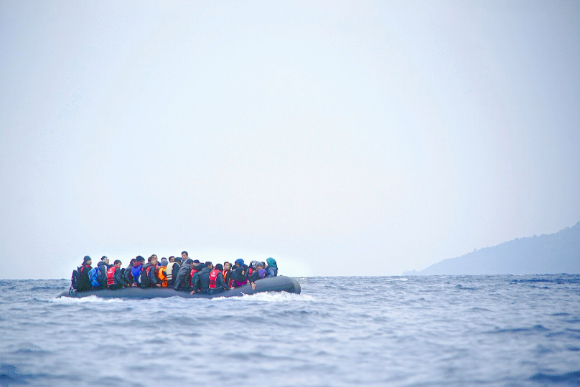
By Mstyslav Chernov/Unframe -Wikipedia
At least 60 refugees and migrants are feared to have drowned following two separate shipwrecks off the coast of Libya, the International Organization for Migration (IOM) has reported, highlighting the continuing dangers faced by those attempting the perilous journey to Europe across the Mediterranean Sea.
“With dozens feared dead and entire families left in anguish, IOM is once again urging the international community to scale up search and rescue operations and guarantee safe, predictable disembarkation for survivors,” said Othman Belbeisi, IOM’s regional director for the Middle East and North Africa.
The first incident took place on June 12 near the Alshab port in Libya’s Tripolitania region, according to the United Nations migration agency. Out of those on board, only five survivors were rescued, while 21 individuals remain missing. Among those feared to have perished are six Eritreans—including three women and three children—alongside five Pakistanis, four Egyptians, and two Sudanese men. The nationalities of four additional victims have not yet been determined.
A second shipwreck occurred the following day, on June 13, about 35 kilometers (22 miles) west of the Libyan port city of Tobruk. In this case, the only known survivor was rescued by local fishermen. He reported that 39 people are still missing.
These latest tragedies add to a growing death toll along the Central Mediterranean migration route. So far in 2025, at least 743 people have died attempting to reach Europe via the Mediterranean Sea, with 538 of those deaths occurring along the Central Mediterranean corridor—considered the deadliest migration route globally.
In recent years, the European Union has intensified efforts to curb migration across the Mediterranean, including through support to Libya’s coastguard. This quasi-military entity has been linked to militias accused of committing serious human rights violations. The EU has supplied the Libyan coastguard with financial resources and equipment to intercept migrants at sea and return them to Libya.
Meanwhile, non-governmental organizations have criticized the decline of state-led search and rescue missions, warning that such policy shifts have made the crossing even more hazardous. NGOs have also condemned what they describe as repressive measures by certain states targeting charitable rescue efforts in the region.
As a result of these policies and growing dangers at sea, many individuals fleeing war, persecution, and poverty have ended up trapped in Libya. There, they are frequently held in overcrowded detention centers, which rights organizations say are marked by appalling and inhumane conditions.
Libya has remained engulfed in instability and lawlessness since the 2011 NATO-backed uprising that led to the ousting and death of longtime leader Muammar Gaddafi. In this climate of chaos, human traffickers and smuggling networks have flourished, exploiting the plight of vulnerable migrants and refugees.
Rights groups have repeatedly accused Libyan authorities of a range of abuses, including arbitrary detention, torture, forced labor, extortion, and even slavery, painting a grim picture of the environment awaiting those intercepted and returned to the country.




